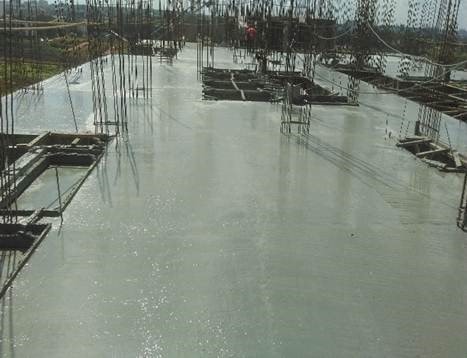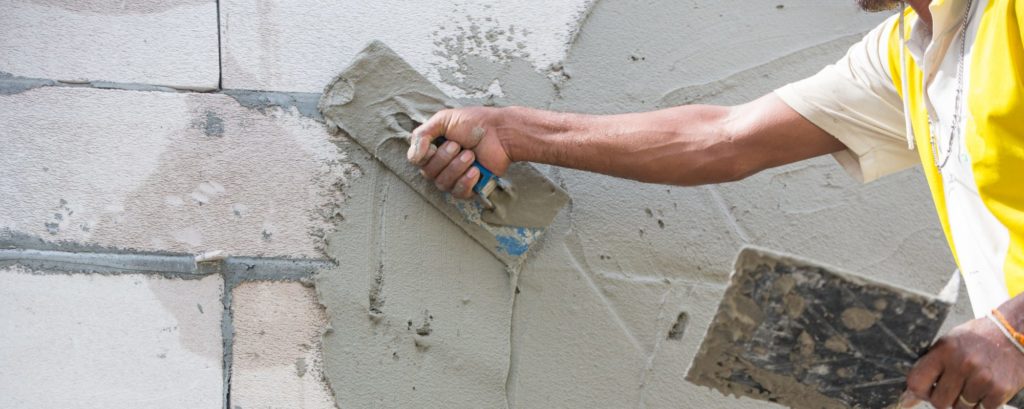Internal painting - painting works
Painting works : How to paint a wall?
The very purpose of this method statement is to provide complete guide lines for Internal painting and External painting works for walls as per IS standards and specifications (IS 2395 : 2005, IS 2932 : 2003 and IS 2933 : 2001)
- Paints being inflammable material, so all containers of paint, thinners, varnish and related materials should be stored preferably in a separate room.
- The room is well ventilated but free from extreme heat, flashing and through sun rays.
- The fire extinguisher, sand buckets should be placed next to the store room door for easy accessibility.
- No smoking board should be displayed on the walls, and room should free from all cotton, petrol, diesel, wood etc.
- The paint should be used before its expiry date mentioned on the containers.
- The lids of containers not to be open, apart from its time of usage.
Before going for how to paint a house? these points are borne in mind.
- All loose particles, dirt, chalk, dust, oils and grease must be thoroughly scrapping and rubbed down from the surface using branded sandpaper.
- Make sure that the approved and duly certified brand and shade of paint is ordered and dispatch to the project site in sufficient quantity.
- Ensure that all internal and external ceiling, wall surfaces are completely finished with plastering works and dry before starting Internal painting.
- Make sure that all furniture units, fixtures, and the flooring is protected and covered by sheets, or POP before starting Internal painting works.
- Proper scaffolding arrangement including paint stands, ladders, platforms with safety measures to be taken.
- To avoid scratches on the expensive flooring, bottom legs of paint stand and ladders to be covered with sack bags.
- All painting items like brush, roller, mixing tray, bucket, etc. to be neatly cleaned and washed outside the working premises before starting house interior walls painting works.
Paint brushes, Rollers, Trowels, Line thread, Tube levels, patti blades, scraping blade, dust brush, wire brush, blow lamp, pallet board, Sand paper, Cloth emery, Water proof emery, Abrasive stones emery, polythene sheets, ladder, masking tape, paint bucket, straight edge or ruler, strainer, brush holder, spray gun, mechanical stirrer.
How to paint your house?
- First apply the primer coat over the wall surfaces using Roller.
Distemper :
- The distemper should be diluted with branded thinner as per specification only, Ensure that Sufficient quantity of distemper for a day’s is prepared.
- On internal wall surfaces, after the primer coat has dried for minimum 48 hours, the surface to be gently rubbed using zero no. sand paper to make it smooth for receiving the distemper.
- Caution: Care should be taken not to rub out the priming coat.
Application of putty :
- A coat of putty is to be applied to the entire surface.
- Putty is prepared by mixing whiting chalk, primer or paint in required proportion as per specifications or reputed brand ready putty.
- The second coat of primer and putty is then applied and it should be later allowed to dry for minimum 48 hours. Fine sanding is required for both putty coats.
- All loose particles to be dusted off after rubbing.
- Minimum two coats of distemper is to be applied using 6” bristle brushes or rollers in horizontal strokes, instantly followed by vertical strokes which together shall make one coat.
- The succeeding coats to be applied after a time interval of minimum 24 hours between two successive coats to allow proper drying of the previous coat.
Finishing :
- Advice: The finished painted surface is even and uniform without brush marks, distemper drops and any patches.
- Ensure, sufficient quantity of distemper is mixed to complete one room at a time and finished at a stretch only.
- After a day’s work, all brushes to be thoroughly washed in hot water or soap solution and hung down to dry.
- The surface of doors, windows, ventilators, interior furniture, Electrical, sanitary fixtures etc. and any other part of the buildings which were not to painted to be protected from being splashed upon.
Stirring :
- Before pouring emulsion paint which is used for internal painting works into small containers, the paint shall be stirred thoroughly using mechanical stirrer in its container itself.
- In addition, the paint to be constantly stirred in the smaller container, to obtain uniform consistency.
Crossing and laying off :
- The paint to be applied on uniformly and effortlessly by means of crossing and laying off.
- The crossing and laying off consists of covering the surface with paint, that means, brushing the surface tough for the first time, then brushing alternately in opposite directions by two to three times, then finally brushing lightly in perpendicular direction.
- By patiently doing this, no brush marks are visible after the completion of work.
- The complete process of crossing and laying off will make one coat.
Finishing :
- The Internal painting should be applied with brush for first two coats and final finishing shall be done with roller.
- Marks and splashes of paint over floors, skirting is to be cleaned immediately using wet cloth, sponge and thinner to avoid hardening of paint.
- Caution : For Walls painted by emulsion, Washing is not to be done within 3 to 4 weeks of its application.
- Advice : The application of Internal Painting is not advisable for new building less than four months of the plastered surface. The moisture in plaster surface will causes an issue of peeling off or swelling. Hence due cautioning to be given to clients or consultant if they insist on painting to start during initial four months of drying.
Connect with us to avail a complete construction services
CONTACT US
15/4, gurunath 2 A cross Hanumagirinagar, Chikkallasandra Main Road Subramanyapura,
Bengaluru – 560061
info@myhomemydesign.in
Our Happy Clients
Client Testimonials


LLP, Ex-President- RMC Readymix (India)


MBBS and Chairman at PRANA MEDICAL CENTER, SPECIALIST CENTER FOR DIABETES, ENDOCRINE,
OBESITY. – Kodambakkam – Chennai- 600024
Always Dedicated & Devoted
Latest Projects

Excavation for basement and footing

Compaction of Concrete

Building ByeLaws for Residential Buildings – All You Wanted to Know

How to Plaster Your House? Guide for Home Plastering

EXTERIOR PAINTS – PAINTING WORKS

